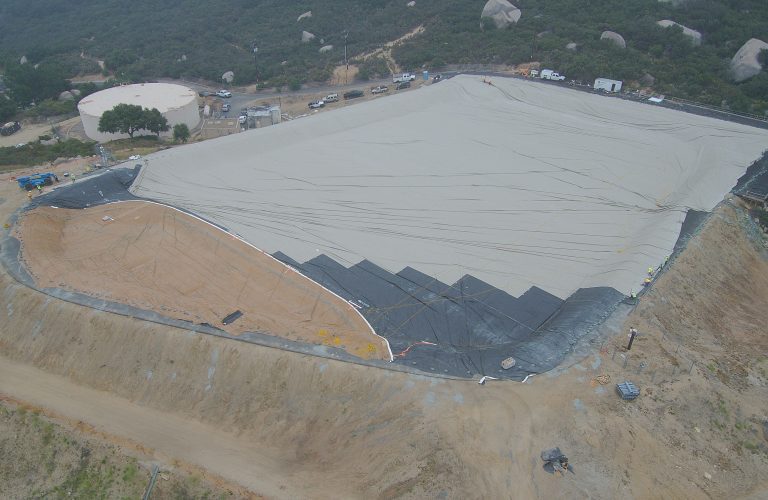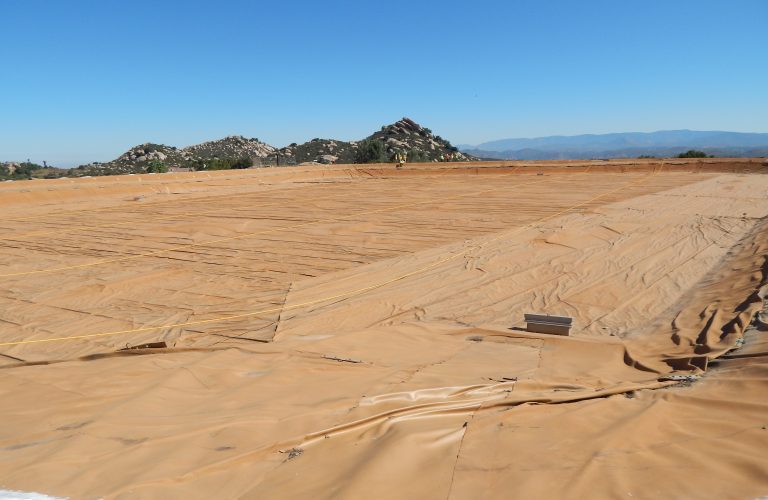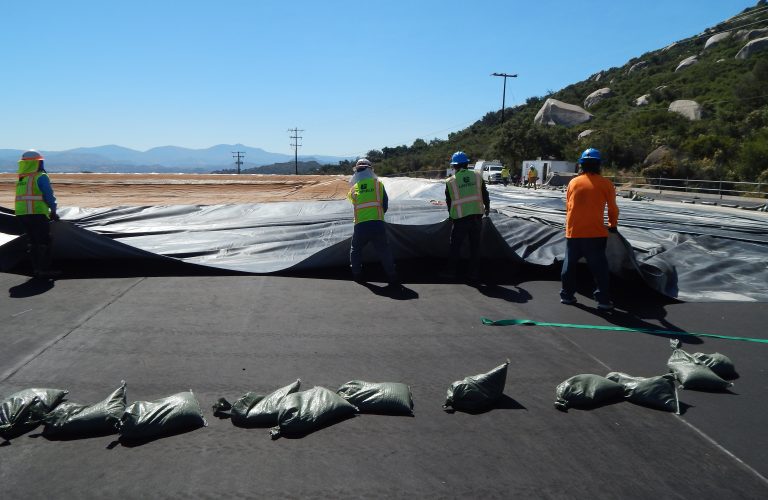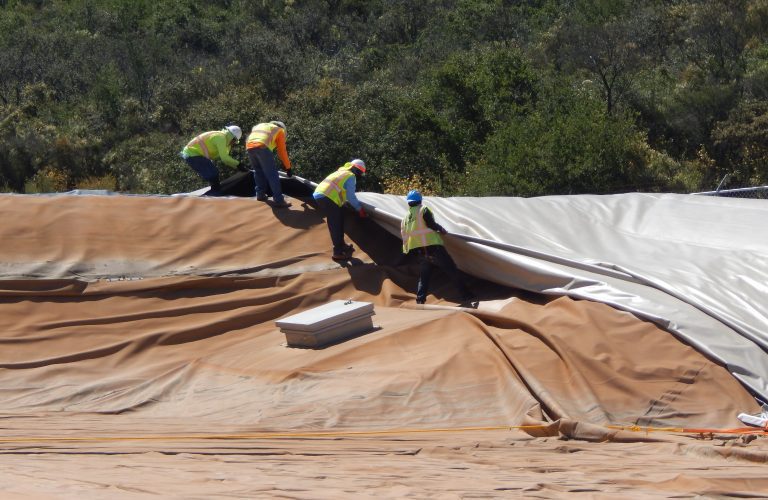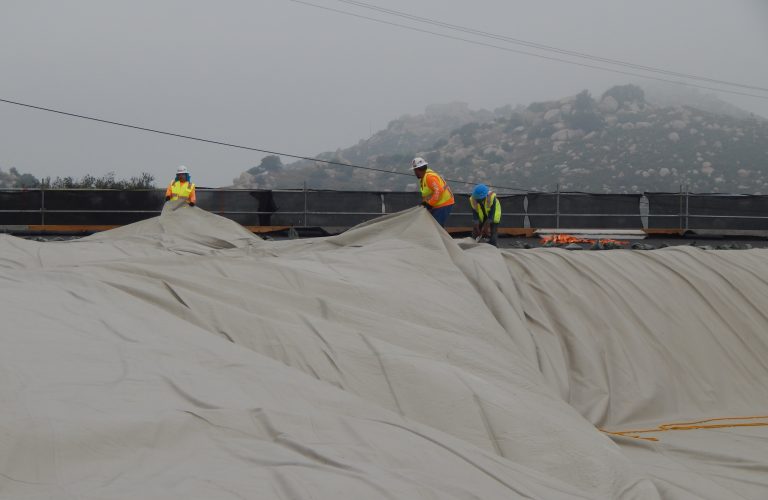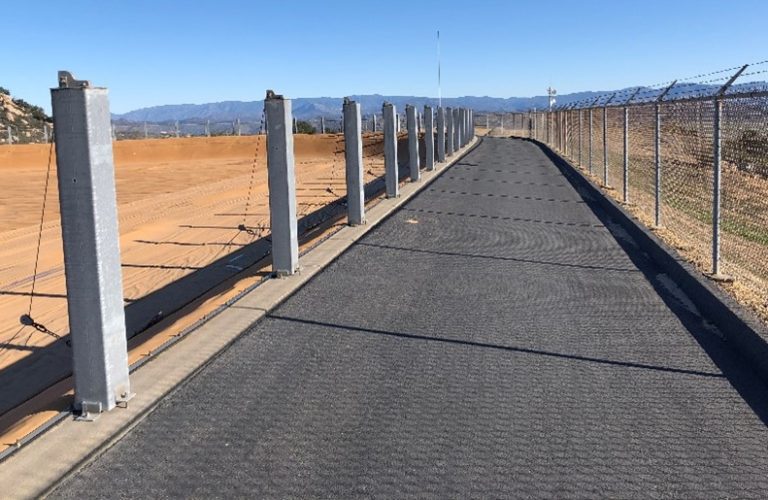Background and Challenges
The City of Ramona Municipal Water District had originally planned as part of their longer-term capital planning budgets to replace an existing 29-year-old 45 mil CSPE floating cover in the next two to three years. However, as part of a strategic risk management review of their existing water storage facilities, they decided to move forward with this requirement early. The project scope required the demolition and removal of the existing 29-year-old CSPE cover and the supply and installation of a new replacement 136,000 ft2 (12,640 m2) 45 mil beige/tan HypaFlex™ CSPE floating cover. The project faced several logistical challenges, including a very limited working area on-site and not being able to take the existing reservoir out of commission during the installation of the new cover system.
Solution & Insatllation
This was a requirement in order to prevent the treated water from being exposed to environmental contamination during construction. To fulfill this requirement, the existing cover had to be removed simultaneously and in sequence with the new cover installation. This required that we weld the leading edge of the new cover material directly to the end of the old cover material. As the old cover was pulled off the reservoir, the new cover was floated into place. The irregular shape of the reservoir and limited access space prevented us from being able to deploy and weld the large prefabricated floating cover panels. To address the tight space constraints, Layfield constructed a scaffold-supported 14,000 ft2 (1,300 m2) wood platform located at the northwest corner of the reservoir. As the reservoir was situated on the side of an embankment, this required 16’ to 20’ (4.9 to 6.1 m) high vertical scaffolding and shoring to be designed and erected to support the working platform. This platform provided the additional work area required to stage, unroll, and weld the prefabricated panels for the new floating cover.
The cover system was tensioned around the perimeter with 5’ (1.5 m) high mechanical weighted tensioning towers installed on 8’ (2.4 m) centers. These steel tensioning towers were the original units installed over 29 years ago, and outside of some refurbishing of components were reused for the new cover system. The tensioning towers include pulleys and weights that incorporate steel cables connected to a reinforced designed HypaFlex™ CSPE strip attached to the cover material. This perimeter cable system provides the required tensioning and buoyancy, allowing the cover to fluctuate with the water freeboard levels and supporting personnel on top of the cover for maintenance and cleaning. The HypaFlex™ CSPE cover system was prefabricated in our Lakeside, CA plant and shipped to the site in custom panels that were 35’ (10.7 m) wide by various lengths allowing for the irregular shaped configuration of the reservoir. While the original 45 mil HypaFlex™ CSPE cover was just over 29 years old and quite faded on the top side surface, it was still functioning, and from observation of its condition, we determined that it could have performed for a couple more years.
Result
This was a very challenging floating cover replacement project based on the irregular shape of the reservoir, tight working space, and environmental conditions. The project team demonstrated interesting project ingenuity and engineering in their approach to resolving the challenges. This installation would not have been possible without using a flexible geomembrane material allowing for large prefabricated panels to be supplied and further installed on-site. The design and construction of the 14,000 ft2 (4,267 m2) scaffold platform was critical, allowing for sufficient workspace to unroll and weld the new HypaFlex™ CSPE cover material to the existing material. The project also proved that we could attach by welding the new HypaFlex™ CSPE cover material to the 29 old CSPE material allowing the installation to be completed without exposing the potable water to the outside environment during construction.
Acknowledgement: A special thanks to Adam Hackel, the Layfield Project Manager on the Mt. Woodson project, for his input and contribution on this project.
